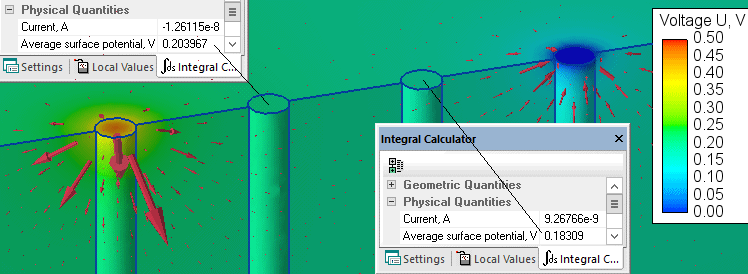Wenner method for concrete and soil conductivity measurements
QuickField simulation example
Wenner electrode array is an assembly of four collinear and equally spaced electrodes where the current is supplied through two outer electrodes and the potential is measured at two inner electrodes. Electrodes are attached to the surface of some solid media or specimen (soil, concrete) and the resistivity of the bulk material is measured this way. Wenner method measurements are performed for electrical soil testing, analysis of the concrete structure and widely used in geophysics, non-destructing evaluation of the building structures, electrical grounding calculations and many other applications.
Problem Type
3D problem of DC conduction.
Geometry
Given
Electric conductivity of concrete σ = 0.01 S/m;
Electrodes spacing a = 38 mm (1.5");
Injected current I = 50 uA;
Task
Calculate the electric potential drop on Wenner array electrodes.
Solution
Wenner method is based on following equation
ρ = 2π*a * (V / I)
where ρ is bulk material electrical resistivity (reciprocal to electrical conductivity σ),
I is injected current and V is a measured voltage.
Results
Wenner method formula gives V = ρ * I / (2π*a) = (1/0.01) * 50e-6 / (2*3.142*0.038) = 0.0209 V.
QuickField simulation gives:
* potential on electrode M is VM = 0.204 V.
* potential on electrode N is VN = 0.183 V.
Simulated potential difference is VM - VN = 0.204-0.183 = 0.0210 V
Electric potential distribution in the concrete specimen during Wenner probe resistivity measurements.

- Download simulation files (files may be viewed using any QuickField Edition).